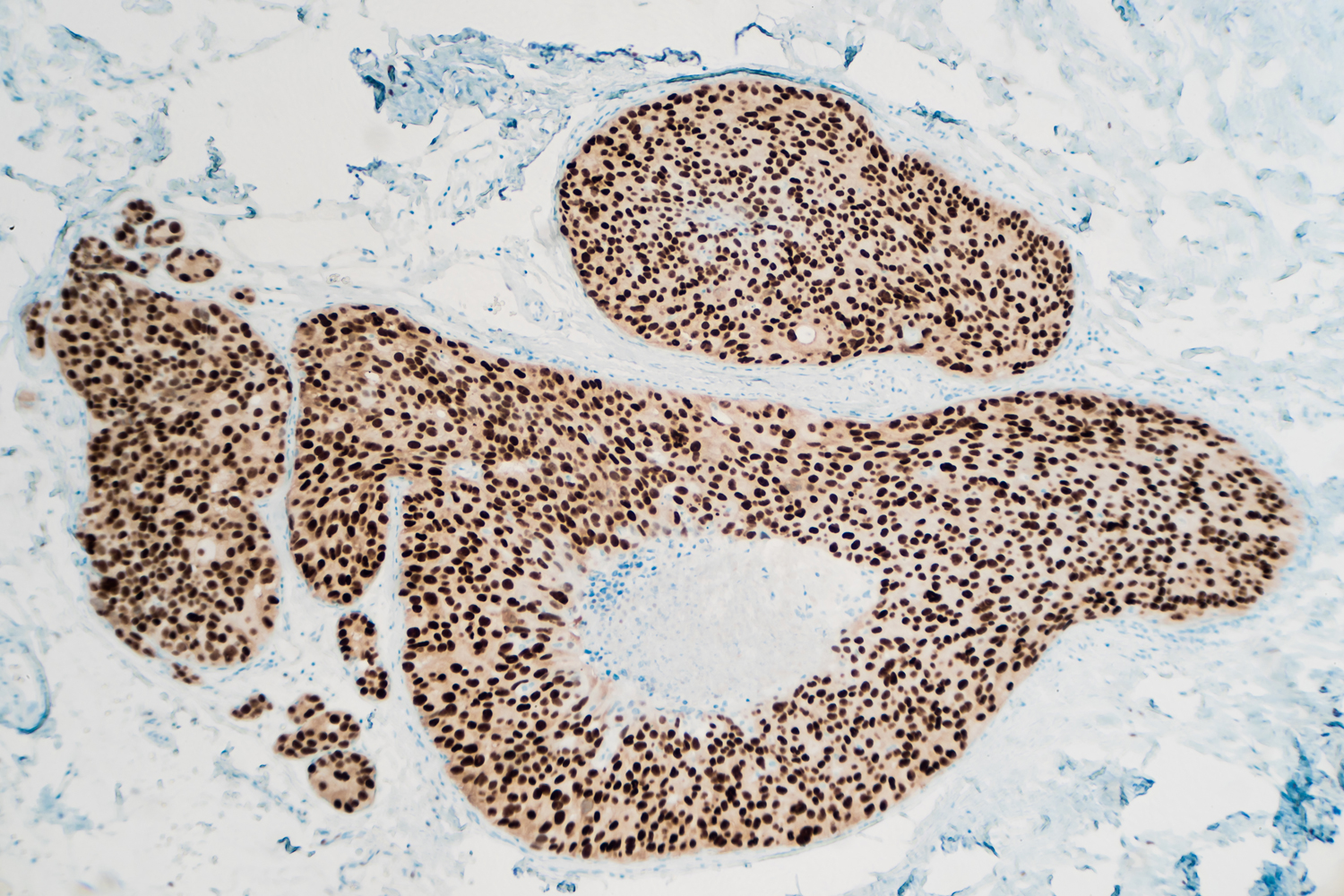Every week, the editors of Cancer Today magazine bring you the top news for cancer patients from around the internet. Stay up to date with the latest in cancer research and care by subscribing to our e-newsletter.
AI Can Help Identify People Eligible for Targeted Breast Cancer Treatment
Artificial intelligence (AI) can help doctors find low levels of the HER2 protein in some people with breast cancer and prevent the disease from being miscategorized, according to a study presented May 30 at the 2025 American Society of Clinical Oncology Annual Meeting in Chicago. The HER2 protein fuels cancer progression, and HER2-targeted therapies work by stopping this protein from supporting tumor growth. Historically, around 20% of people with breast cancer had tumors that expressed high enough amounts of HER2 to qualify for these treatments, HealthDay reported. However, research has shown even people whose tumors express low or ultralow levels of the protein can benefit from newer targeted therapies. In the study, pathologists performed 1,940 readings on a selection of breast cancer biopsies to determine if the tumor expressed any level of HER2. For a third of the biopsies, pathologists used an AI program called ComPath. Researchers found pathologists were 67% accurate without ComPath and improved to 89% accuracy with the AI program. Additionally, 30% of cancers with ultralow HER2 expression were incorrectly categorized as HER2-negative when pathologists did not use AI, compared with 4% when they used ComPath. “Our study provides the first multinational evidence that artificial intelligence can help close a critical diagnostic gap and open the door to new therapies like antibody-drug conjugates for a majority of patients who, until recently, had not been offered these options,” Marina De Brot, a study author and a pathologist at the A.C. Camargo Cancer Center in São Paolo, Brazil, said in a press release.
Cancer Deaths Rise Among Women in Nations Facing Extreme Heat
In countries with extreme heat, cancer incidence and deaths among women have increased as the temperature has gone up during the past 20 years, according to a study published in Frontiers in Public Health. Researchers analyzed breast, cervical, ovarian and uterine cancer data for women in 17 countries in the Middle East and North Africa between 1998 and 2019. They found that, for every 1 degree Celsius increase, cancer incidence rose by between 173 and 280 cases per 100,000 women. Additionally, there were between 171 and 332 more cancer deaths per 100,000 women for each degree increase. “The most striking finding was the consistency of the correlation between temperature increases and cancer prevalence and mortality, not just regionally but also in several individual countries,” Wafa Abuelkheir Mataria, a study author and a global health equity researcher at American University in Cairo, told the Washington Post. The study acknowledged that women in these nations often have difficulty accessing cancer screening and care, which may have impacted the results. Researchers noted extreme temperatures can increase exposure to ultraviolet radiation and exacerbate air pollution, which both raise cancer risk, while drought and wildfires caused by extreme heat can prevent people from receiving health care. “Temperature rise likely acts through multiple pathways,” Sungsoo Chun, another study author and a global health professor at American University in Cairo, said in a press release. “It increases exposure to known carcinogens, disrupts health care delivery and may even influence biological processes at the cellular level. Together, these mechanisms could elevate cancer risk over time.”
Men and Women Get Skin Cancer on Different Parts of the Body
Clothing choices could impact where on the body people develop skin cancer, according to study results released by Cancer Research UK. Using data on melanoma incidence in the U.K. from 2018 to 2021, the study identified differences in where on the body men and women develop melanoma. Researchers found men were most likely to have melanoma on their torso, with 40% of cases forming there, but for women, that was the second least common spot. Women were most likely to develop melanoma on their lower limbs—anywhere from their hips to their feet—with 35% of cases occurring there, while that was the least common place for men. Researchers attributed these differences to clothing choices during summer weather, as men frequently do not wear a T-shirt at the beach, while women often wear skirts or shorts when the temperature rises. They also noted men typically have bigger torsos than women, while legs make up a larger proportion of the skin’s surface area for women than for men. Experts said the results provide further evidence of the importance of taking proper steps to help prevent skin cancer. “As the weather gets warmer, it’s really important to look after yourself in the sun,” Fiona Osgun, head of health information at Cancer Research UK, said in a Guardian article. “Getting sunburned just once every couple of years can triple your risk of melanoma skin cancer, compared with never being burned.” To reduce skin cancer risk, experts recommend people avoid the sun between 11 a.m. and 3 p.m., wear clothing that covers the skin and use sunscreen.
Cancer Today magazine is free to cancer patients, survivors and caregivers who live in the U.S. Subscribe here to receive four issues per year.





